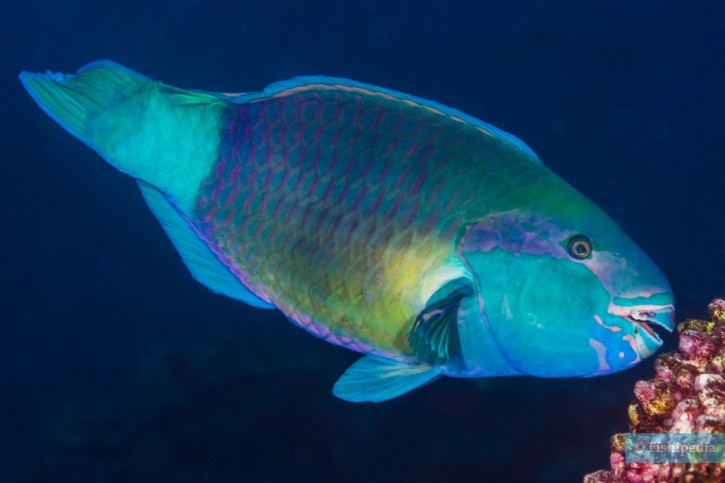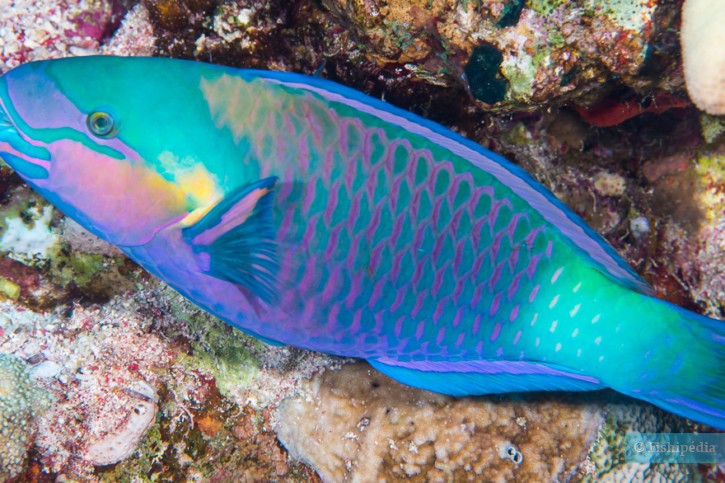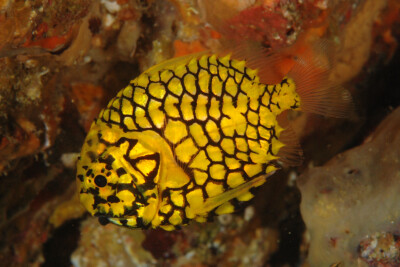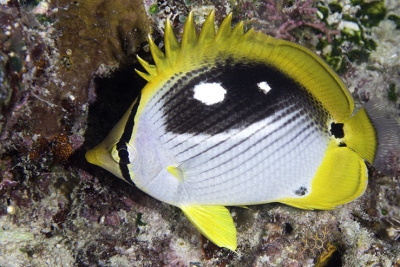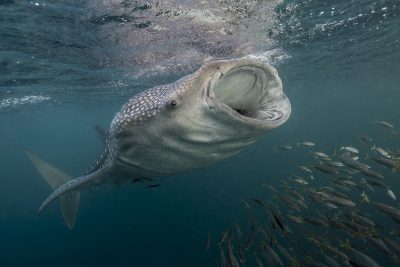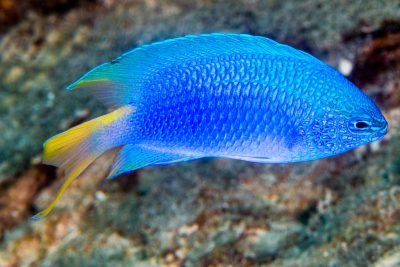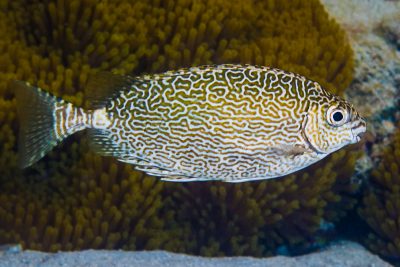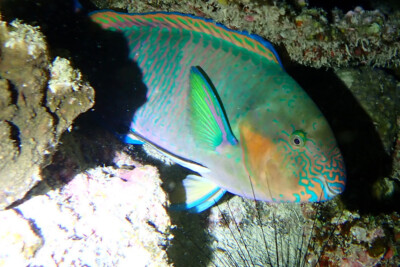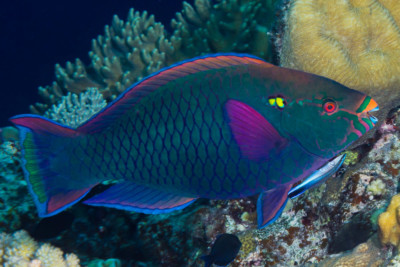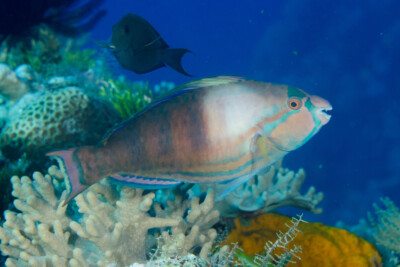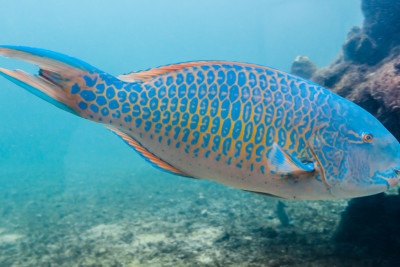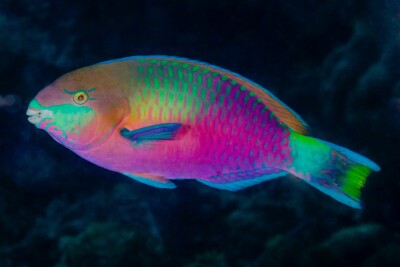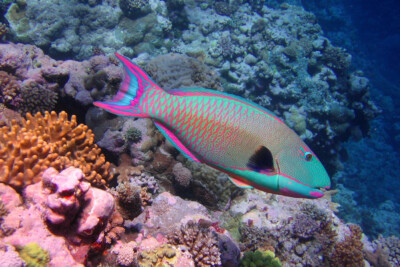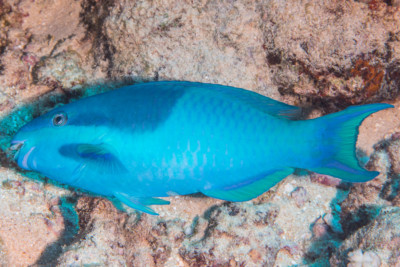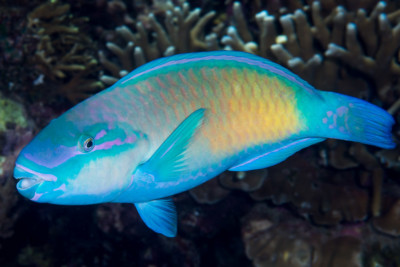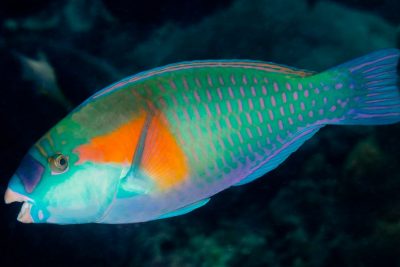daisy parrotfish
| Scientific name | Chlorurus sordidus |
|---|---|
| Descriptor | Forsskål |
| Year of description | 1775 |
| IUCN category (World) | LC |
| Family | Scaridae |
| Genus | Chlorurus |
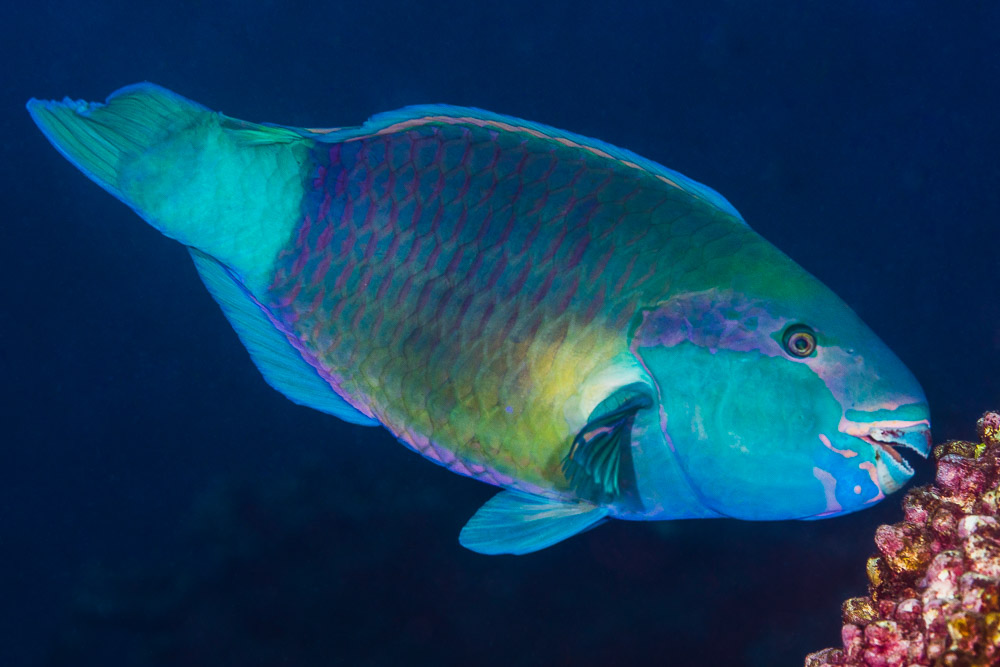

Introduction
Chlorurus sordidus is found in the coral reefs of the Indo-Pacific region.
Who is it?
Morphology
-
Average size21 cm
-
Maximum size40 cm
-
Average size21 cm
-
Maximum size40 cm
How to recognize This fish ?
In the initial phase, Chlorurus sordidus is black with two lines and three or four dots. The tail is light with a large central black spot.
In the terminal phase, although very variable, there is generally a large pale yellow spot on the rear part of the body. The tail is blue with a rather well-defined vertical line (not to be confused with the Chlorurus japanensis which has an oblique division).
Behaviour & Life cycle
-
dietherbivorous
-
Sociabilityliving in a group or alone
-
territorialNo
-
Way of livingdiurnal
Chlorurus sordidus is a lively fish living alone or in large groups (+50). It is a species with a rather lively temperament. Younger individuals form large groups, capable of migrating long distances between feeding and resting places.
It feeds on algae by nibbling on dead corals and contributes to sand generation.
Reproduction
-
Reproductionovipare qui pond en eau libre
Chlorurus sordidus is an oviparous fish that lays eggs in open water.
Harmless species
This species does not represent any particular threats to humans when encountered in its natural environment.
Origin and distribution
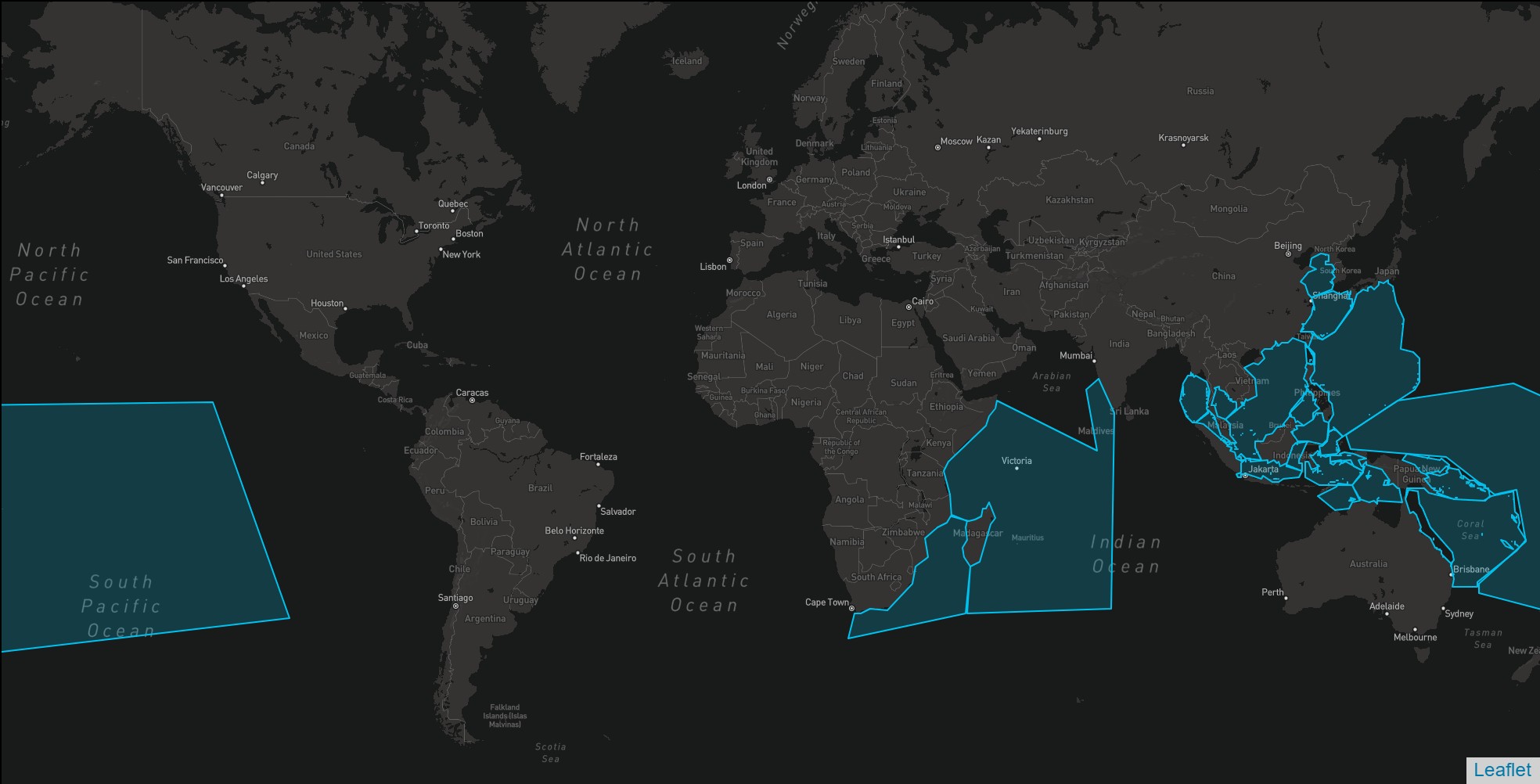
What is its habitat?
Natural environment characteristics
-
Depth0 - 50 m
Biotope presentation
Chlorurus sordidus is most often found at depths of less than 50m. However, it is not impossible to find this fish at other depths.
Species of the same biotope
Fishkeeping
Not recommended
We do not recommend keeping this species in an aquarium. It has unpredictable needs which, if not met, generate significant stress, potentially leading to a shorter life expectancy, an interruption of its growth or the development of pathogens.
To go further
Sources & Contributions
Participation & Validation
The Fishipedia team and specialist contributors are committed to providing high-quality content. However, although the information comes from scientific sources or testimonials from specialists, the cards may contain inaccuracies.

Alexandre Dumaine

Marc Raggi
Translation
Translation done with the valuable contribution of our translators, who make this information available to a wider audience. We sincerely thank them for their commitment.
Bibliographic references
A Review of Parrotfishes (Perciformes: Scaridae) of Taiwan with Descriptions of Four New Records and One Doubtful Species - Yun-Chih Liao - Kwang-Tsao Shao - I-Shiung Chen - Zoological Studies - 2004.
Life histories predict vulnerability to overexploitation in parrotfishes - Brett M. Taylor - Peter Houk - Garry R. Russ - J. Howard Choat - Coral Reefs - 2014.
Studies on the Reef-Dwelling Fishes of India - Parrotfishes - R.P. Barman - S.S. Mishra - Zoological survey of India - 2005.
The functional morphology, systematics and behavioural ecology of parrotfishes (family Scaridae) - D.R. Bellwood - James Cook University - 2009.
Scientific partners
Tags
Species of the same family
Same genus
Species of the same biotope
